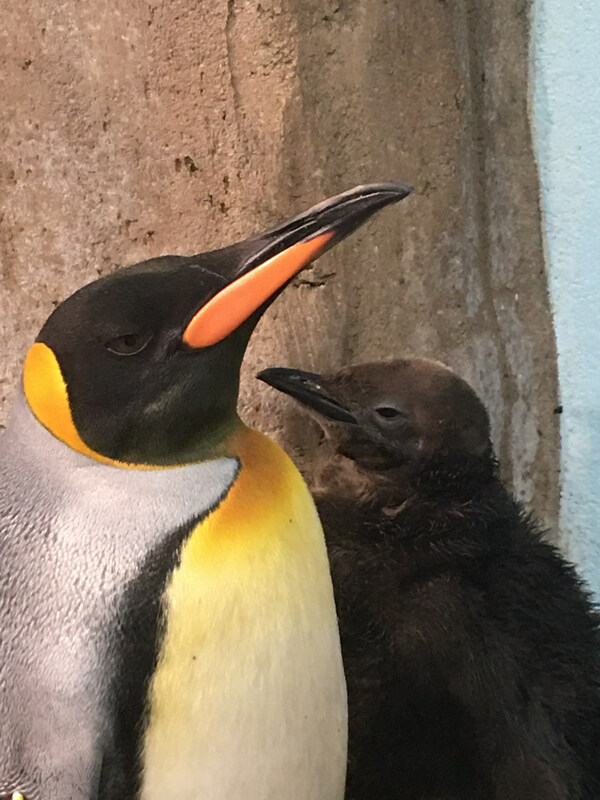#CanadaPeachy #PeachysPetPals BIRTH OF A KING PENGUIN AT THE BIODÔME
Espace pour la vie is pleased to announce the birth of a king penguin at the Montréal Biodôme. Born on February 1st, the small penguin and its mother are doing quite well. Since its birth, the chick is lively and is following the normal stages of its development. Snuggled up warmly between its mother's legs and abdominal fold, the chick is currently in a space sheltered from other penguins in the Biodôme's Subantarctic Islands ecosystem. Mother and baby are currently developing a very special bond. During this key period, the Biodôme team is keeping interventions to a minimum while ensuring that everything goes well for both. The king penguins' development is normally quite slow, so visitors can expect to catch an occasional glimpse of it from about 2 months of age, and progressively more as it gains in self-reliance. Gradually, the chick will become more autonomous, and once it has acquired its waterproof plumage, it will be able to swim in the pool with the other penguins. Until the chick can be spotted on a more regular basis, the public will get to check in on it on the Espace pour la vie social networking sites.

Espace pour la vie / Éric Charette (CNW Group/Espace pour la vie)
Gentle growth
Don't look for a tiny chick with a black back, white belly and orange beak in the Biodôme habitat. King penguin chicks start out with a short, gray-black down. From the age of two weeks, and little by little, they acquire a thick brown woolly coat that it will keep for several months—which will make it all the easier to spot! From that moment on, the juvenile moult (water-repellent plumage in the colours of the king penguin) begins gradually around 4 months and takes 10 to 12 months. Once it has its waterproof plumage, the chick can dive into the water!
HIGHLIGHTS ABOUT THE CHICK AT THE BIODÔME
The 4 adult king penguins arrived at the Biodôme in July 2020 from the Calgary Zoo.
Mating had been observed a few weeks before the egg was laid and only the female incubated the egg.
The egg was laid on December 29, 2022.
On January 31, 2023, the penguin team checked the egg and saw that it was about to hatch.
The egg hatched on February 1, 2023.
The actions of the animal care team are kept to a minimum so as not to disturb the mother and chick.
A FEW FACTS ABOUT KING PENGUINSKing penguins don't build a nest. They carry their egg on their feet and can even move about this way. The egg is covered and kept warm under a fold of skin in the parent's lower abdomen.
After hatching, the parents continue to carry the chicks on their feet for 30 to 40 days until the feathering and body temperature self-regulation system are in place.
King penguin development is very gradual and the rearing of the young can take from 40 to 59 weeks.
As with any other penguin, the morphology of king penguins makes them incapable of flying.
RESEARCH AND CONSERVATION HIGHLIGHTS
King penguins are a species with a status of "Least Concern" according to the International Union for Conservation of Nature (IUCN). Currently, 286 individuals in 17 institutions accredited by the Association of Zoos and Aquariums have been identified. Populations in the wild have recovered but remain at risk in light of the threats global warming presents.
Espace pour la vie comprises the Biodôme, the Biosphère, the Insectarium, the Jardin botanique and the Planétarium Rio Tinto Alcan. These five prestigious institutions of the Ville de Montréal form Canada's largest natural science museum complex. Together, they are launching a daring, creative urban movement, encouraging all of us to rethink the connection between humankind and nature and cultivate a new way of living.





































































































